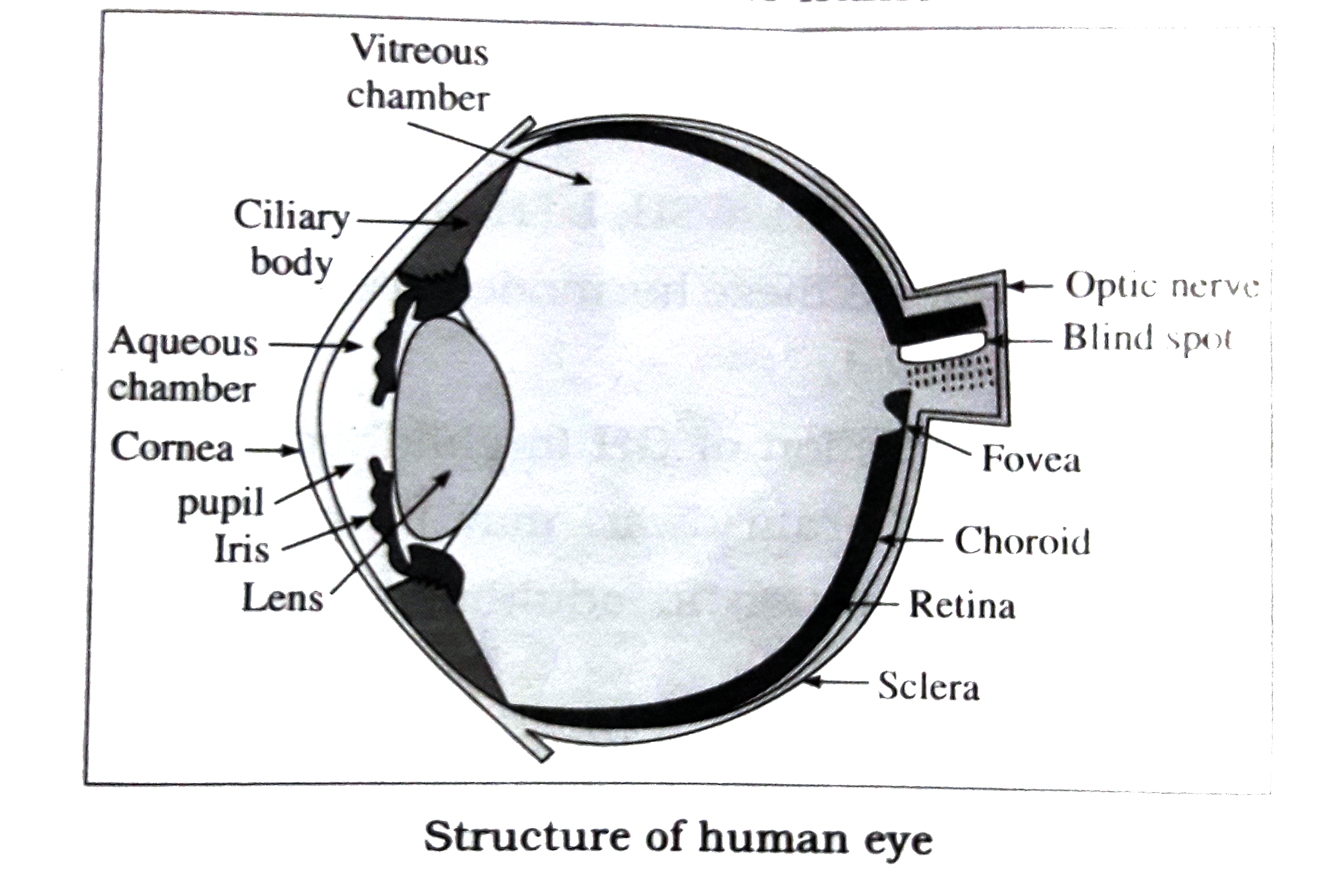Describe the different parts of human eyes.
Text Solution
(1) Eyeball is spherical and has three layers.
(2) Sclera is the outer layer of dense connective tissue. Its transparent anterior portion is termed as a cornea.
(3) Choroid is the middler layer. The posterior two third region of this layer is thin, while the anterior region is thick which forms the ciliary body.
(4) Iris is the forward segment of the ciliary body which is pigmented and opaque.
(5) Lens is a transparent crystalline structure. It is present anteriorly inside the iris and is held in position by the ligaments of ciliary body.
(6) The aperture surrounded by the iris in font of the lends is known as pupil.
(7) The innermost layer of the eye is the retina which consists of three sub-layers formed by ganglion cells, bipolar cells and photoreceptor cells, which are sensitive to light.
(8) There are two types of photoreceptor cells viz. road and cones containing photogments, rhodopsin which is a derivative of vitamin A (in roads) and iodopsin (in cones).
(9) The cones are responsible for daylight or photopic vision and colour vision. The rods function in dim light giving scotopic vision.
(10) The optic nerve leaves the eye at a point slightly away from the median posterior pole of the eyeball . In this region, the rods and cones are absent therefore this region is known as blind spot. Macula lutea, a yellowish pigmented spot is present lateral to the blind spot. Forvea is a central pit present beside it.
(11) A space between the cornea and the lens is called aqueous chamber, containing aqueous humor.
(12) Vitreous chamber is the larger space between the lens and the retina which is filled with vitreous homor.

|
Topper's Solved these Questions
- LONG ANSWER QUESTIONSBOOK - NAVNEET PUBLICATION - MAHARASHTRA BOARDCHAPTER - LONG ANSWER QUESTIONSEXERCISE - Human Reproduction
8 Videos
- LONG ANSWER QUESTIONSBOOK - NAVNEET PUBLICATION - MAHARASHTRA BOARDCHAPTER - LONG ANSWER QUESTIONSEXERCISE - Additional Important Questions for Self-practice
1 Videos
- LONG ANSWER QUESTIONSBOOK - NAVNEET PUBLICATION - MAHARASHTRA BOARDCHAPTER - LONG ANSWER QUESTIONSEXERCISE - Excretion and Osmoregulation
2 Videos
- GIVE REASONS BOOK - NAVNEET PUBLICATION - MAHARASHTRA BOARDCHAPTER - GIVE REASONS EXERCISE - Organisms and Environment - II
2 Videos
- MATCH THE COLUMNS/MATCH THE PAIRS/COMPLETE THE TABLEBOOK - NAVNEET PUBLICATION - MAHARASHTRA BOARDCHAPTER - MATCH THE COLUMNS/MATCH THE PAIRS/COMPLETE THE TABLEEXERCISE - Chapter 19 : Organisms and Environment - II
3 Videos
Similar Questions
Knowledge Check
Distance between the focussing parts of the two human eyes is about.
A2 cmB4 cmC7 cmD10 cm.
Describe the functions of different parts of a flower
View SolutionName the photosensitive part of human eye.
View SolutionDescribe the three parts of male reproductive system in human
View SolutionWrite the name of the part of human eye which controls the amount of light entering the eye.
View SolutionWrite the name of the part of human eye which controls the amount of light entering the eye.
View SolutionCircular part in the centre of retina of human eye is called
View SolutionDistance between the focussing parts of the two human eyes is
about.
View Solution
